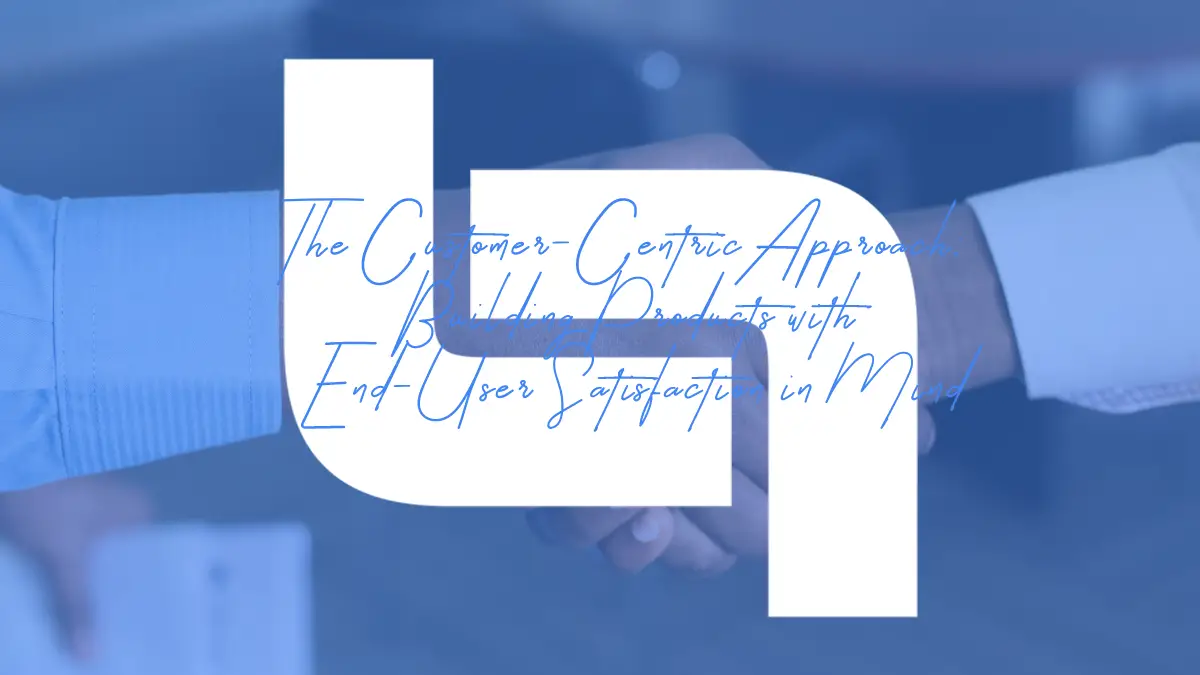It’s no secret that product development is a highly iterative process. Throughout a project, you’ll invariably find yourself going back to the drawing board more than once—whether it’s to fix bugs or address user feedback. But what happens when your users are not only giving you negative feedback on their experience with your app or service but also not using it? Consider Airbnb: for this startup to grow beyond its core market of travelers and guests, it had to ensure that hosts were satisfied with their Airbnb experiences as well. And so began a period where Airbnb focused its efforts on improving guest satisfaction through user interviews conducted by employees who weren’t engineers or designers; these interviews led them down paths they hadn’t thought about before because they weren’t focused on finding new features for end users so much as solving problems for hosts.”
Understanding User Needs: The First Step Towards Customer-Centricity
Customer-centricity is a goal that can be achieved through understanding user needs. The first step towards building a product with customer satisfaction in mind is to understand what your users want and need, which means researching to gain insight into the problem you’re trying to solve.
When we talk about user research, we mean using methods like interviews or surveys to learn more about the end user’s perspective on a particular topic or product. These activities help us better understand why people use certain products and services and they also give us an idea of what types of features might improve their experience with those products/services. For example: if someone says they’re frustrated by how difficult it is for them to access data from different sources within one application (for example), then it may be necessary to use software quality consulting to fix the issue.
This kind of thinking makes all kinds of sense when coming from an engineering standpoint; however, there are many situations where companies fail miserably at getting it right because they don’t fully grasp why customers buy things in the first place and thus don’t know how best serve those needs through innovation.*

Persona Crafting: Putting a Face to the End-User Experience
Personas are archetypes of your typical end-user. They can be created by interviewing users or observing them in their natural environment. Personas help you to focus on the right user needs, and they help you create products that are more likely to be successful with that particular segment of the market.
Persona creation should begin with research into existing data about your potential customers’ demographics, psychographics (what motivates them), behavior patterns, and goals for using technology products. This information can come from sources such as surveys or focus groups or even just observing people as they interact with existing products or services in their day-to-day lives. Once you’ve gathered this information about your target audience’s habits and preferences, it’s time to start crafting fictional characters based on those findings!
Feedback Ecosystem: Harnessing Customer Input for Product Refinement
Feedback is a powerful tool, as it can be used to improve existing products, create new ones, and even test ideas for future products. Focus groups are a good way to get feedback from a group of people at once because they allow you to see how people react when experiencing something in real-time (and not just reading about it). You’ll also receive more detailed information than you would if you were asking each person individually or over the phone.
Focus groups are particularly useful when testing new features or ideas for future products because they allow participants’ reactions and opinions on the subject matter being discussed without bias from other factors like location, age etcetera.”
Beyond Features: Solving User Problems for Lasting Customer Satisfaction
As a product designer, your job is to solve problems for customers. But it’s not enough to just build features you have to make sure those features are solving the right problems for your customers.
If you’re working on an app or website, think about how you can make it easier for people who use your product every day. Are there any areas where they might get confused? Are there any repetitive tasks that could be automated? How can we make things simpler and more intuitive?
The next step is making sure that whatever solution we come up with is scalable: It needs to work well at scale so that we don’t have any issues when millions of people start using our products. We also need to make sure all of our solutions are available to everyone and stay in touch with developers like Artelogic to stay on top of future changes.

Conclusion
We’ve covered a lot of ground in this article, but the takeaway is simple: customer-centricity isn’t just about adding more features or improving existing ones. It’s about understanding your customer’s needs and solving them in ways that make their lives easier. As you work towards this goal, remember that it won’t happen overnight it will take time and effort on both sides! But if you’re willing to invest in this approach, then there’s no doubt you’ll see results sooner rather than later.

